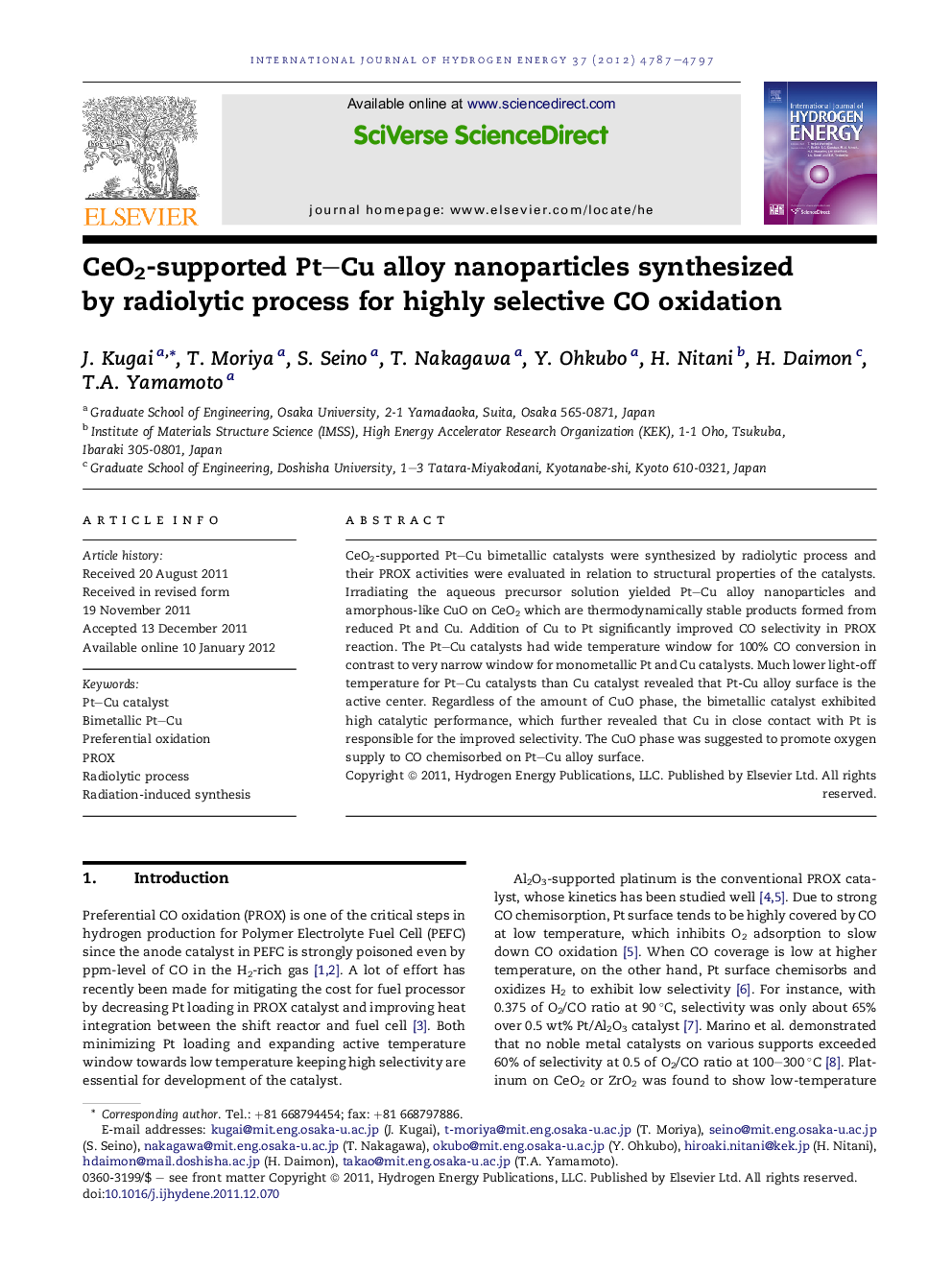| Article ID | Journal | Published Year | Pages | File Type |
|---|---|---|---|---|
| 1271496 | International Journal of Hydrogen Energy | 2012 | 11 Pages |
CeO2-supported Pt–Cu bimetallic catalysts were synthesized by radiolytic process and their PROX activities were evaluated in relation to structural properties of the catalysts. Irradiating the aqueous precursor solution yielded Pt–Cu alloy nanoparticles and amorphous-like CuO on CeO2 which are thermodynamically stable products formed from reduced Pt and Cu. Addition of Cu to Pt significantly improved CO selectivity in PROX reaction. The Pt–Cu catalysts had wide temperature window for 100% CO conversion in contrast to very narrow window for monometallic Pt and Cu catalysts. Much lower light-off temperature for Pt–Cu catalysts than Cu catalyst revealed that Pt-Cu alloy surface is the active center. Regardless of the amount of CuO phase, the bimetallic catalyst exhibited high catalytic performance, which further revealed that Cu in close contact with Pt is responsible for the improved selectivity. The CuO phase was suggested to promote oxygen supply to CO chemisorbed on Pt–Cu alloy surface.
► Pt–Cu alloy nanoparticles of 3–4 nm were synthesized on CeO2 by radiolytic process. ► Pt–Cu alloy is formed by stabilizing process of reduced Cu and Pt in aqueous solution. ► Cu addition to Pt/CeO2 significantly improved selectivity for CO oxidation in PROX. ► Pt–Cu alloy surface is the active center for PROX rather than copper phase. ► Close contact of Pt with Cu is responsible for the high selectivity.
